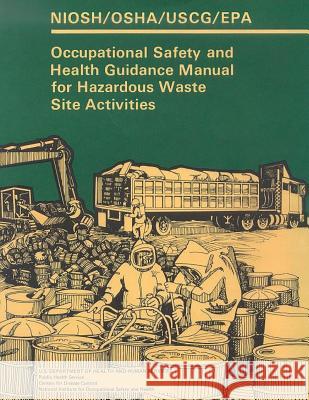Occupational Safety and Health Guidance Manual for Hazardous Waste Site Activities » książka
Occupational Safety and Health Guidance Manual for Hazardous Waste Site Activities
ISBN-13: 9781496182722 / Angielski / Miękka / 2014 / 202 str.
Occupational Safety and Health Guidance Manual for Hazardous Waste Site Activities
ISBN-13: 9781496182722 / Angielski / Miękka / 2014 / 202 str.
(netto: 63,41 VAT: 5%)
Najniższa cena z 30 dni: 66,58
ok. 16-18 dni roboczych
Bez gwarancji dostawy przed świętami
Darmowa dostawa!
In the past decade, industry, government, and the general public have become increasingly aware of the need to respond to the hazardous waste problem, which has grown steadily over the past 40 years. In 1980, Congress passed the Comprehensive Environmental Response, Compensation, and Liability Act (CERCLA) -- the Superfund law-to provide for "liability, compensation, cleanup, and emergency response for hazardous substances released into the environment and the cleanup of inactive waste disposal sites." This manual is a guidance document for managers responsible for occupational safety and health programs at inactive hazardous waste sites. It assumes a basic knowledge of science and experience in occupational safety and health. It is the product of a four-agency committee (the National Institute for Occupational Safety and Health NIOSH], the Occupational Safety and Health Administration OSHA], the U.S. Coast Guard USCG], and the U.S. Environmental Protection Agency EPA]) mandated by CERCLA section 301(f) to study the problem of protecting the safety and health of workers at hazardous waste sites, and by CERCLA section 111(c)(6) to develop a program to protect the health and safety of employees involved in response to hazardous substance releases, removals, or remedial actions. This manual is intended for federal, state, and local officials and their contractors. It may be used: As a planning tool by government or private individuals; As a management tool by upper level or field managers; As an educational tool to provide a comprehensive overview of all aspects of safety and health protection at hazardous waste sites; As a reference document for site personnel who need to review important aspects of health and safety. This document is not a detailed industrial hygiene textbook or a comprehensive source book on occupational safety and health. It provides general guidance and should be used as a preliminary basis for developing a specific health and safety program. The appropriateness of the information presented should always be evaluated in light of site-specific conditions. Other sources and experienced individuals should be consulted as necessary for the detail needed to design and implement occupational safety and health programs at specific hazardous waste sites.
Zawartość książki może nie spełniać oczekiwań – reklamacje nie obejmują treści, która mogła nie być redakcyjnie ani merytorycznie opracowana.











